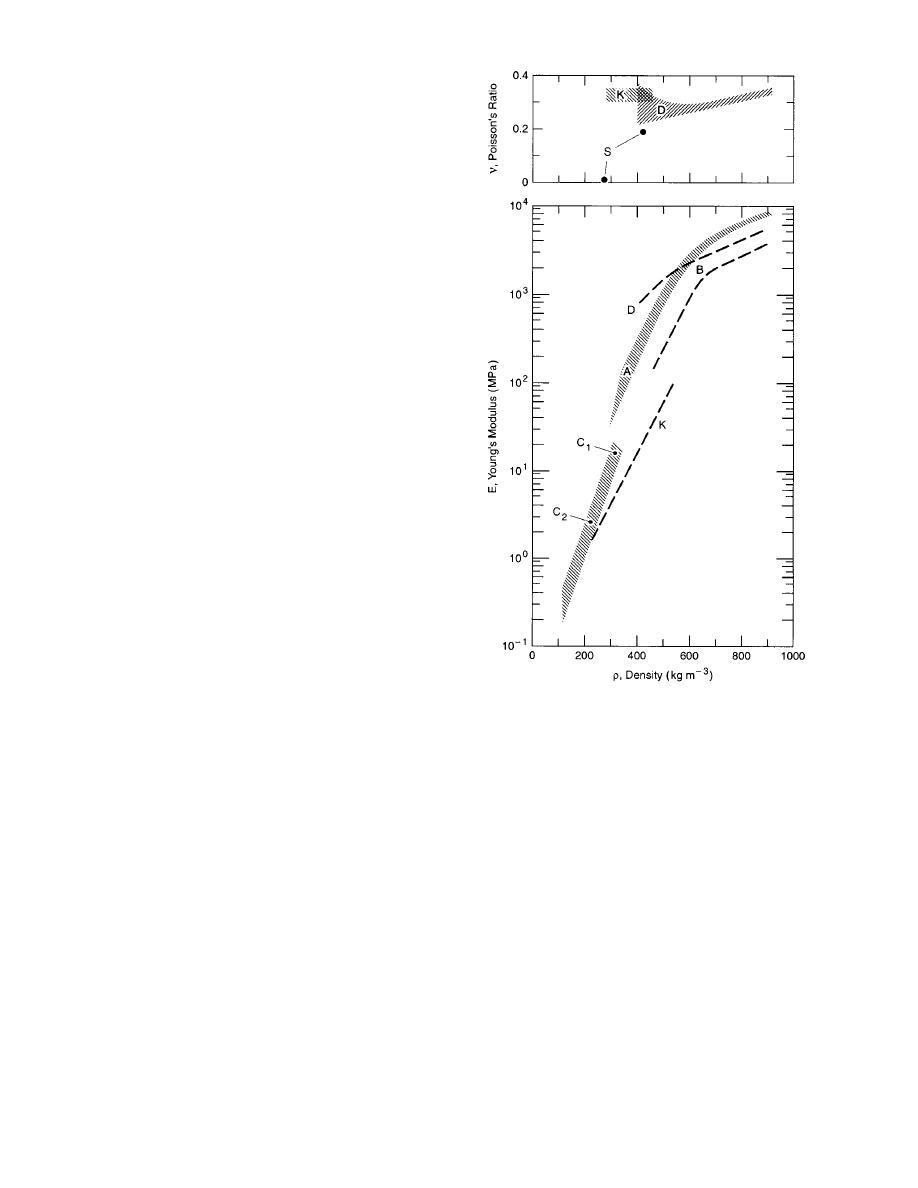
ships including fracture criteria. The only studies
of snow properties cited in Salm (1982) are
McClung's (1977) work on the shear strength of
snow, Narita (1980) and Watanabe (1980) on the
tensile deformation and strength, and an earlier
paper by Tusima (1973) on the densification of
snow under repeated loading.
An extensive body of work done in Russia on
snow properties and processes by Kuvaeva et al.
(1967) appeared in English translation in 1975 but
was overlooked in the reviews described above.
It is a compilation and summary of studies done
between 1948 and 1962 in the Caucasus Moun-
tains and includes material on 1) the thermal prop-
erties of a snowpack, 2) snow metamorphism, 3)
avalanche forecasting, effects and defense, and 4)
the mechanical properties of snow. The tests of
mechanical properties were done between 1958
to 1962, and involved snow types ranging from
newly fallen snow (ρ ≈ 6080 kg/m3) to wind slab
and firn (ρ ≈ 400500 kg/m3). Representative
samples were tested but the data from individual
tests were not generally given. Instead, the re-
sults were presented as parameters for various
constitutive relationships (i.e., as an equation for
Young's modulus with density and temperature
as parameters) that were stated to be within, for
example, 10 or 15% of the data.
Another important work that was not reviewed
earlier is the thesis by Fukue (1979), some of which
was previously published in Yong and Fukue
(1977). The study was broad, but emphasized the
interplay between small-scale processes (friction,
adhesion, sintering and creep of individual grains)
and the macroscopic behavioral characteristics of
Figure B1. Young's modulus and Poisson's ratio vs.
snow in a variety of loading modes. The work
density for dry, coherent snow (modified from Fig. 2 in
involved experiments designed to illustrate those
Mellor 1975). Data sources cited in the original figure
characteristics, but which were not comprehen-
are (A) Pulse propagation or flexural vibration at high
frequencies, 10 to 25C (Smith 1965; Nakaya
sive enough to define the form or parameters of
constitutive relationships. However, the results
1959a,b; Bentley et al. 1957; Crary et al. 1962; Lee
were synthesized into a qualitative model of snow
1961; Ramseier 1963). (B) Uniaxial compression,
strain rate approximately 3 103 to 2 102 s1,
structure which provides a useful framework for
temperature 25C (Kovacs et al. 1969). (C1) Uniaxial
considering and anticipating snow deformation
under a variety of conditions. Fukue (1979) also
compression and tension, strain rate approximately 8
proposed a classification of snow for engineering
test, 6.5 to 19C (Kojima 1954). (D) Complex
purposes, and developed and tested an experi-
modulus, 103 Hz, 14C (N. Smith 1969). (S) Quasi-
mental procedure, which we believe will be im-
portant for indexing snow properties.
static measurements of Poisson's ratio (Salm 1971).
The data on specific parameters are presented
Additional data added for this report; (K) plotted from
in the following sections. Note that in most of the
equation for best fit curve to data for static Young's
figures the parameter is plotted against the den-
modulus and quasi-static measurements of Poisson's
ratio from Kuvaeva et al. (1967).
sity, which is the usual procedure.
26



 Previous Page
Previous Page
